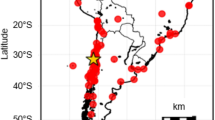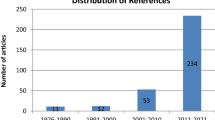Abstract
Synoptic-scale weather systems play dominant roles in inducing high tropospheric dust over the Tibetan Plateau (TP). However, few studies have summarized the typical synoptic-scale weather patterns when high tropospheric dust occurs over the TP, as well as the difference between the distribution and transport methods of dust under weather patterns. Based on dust optical depth (DOD) from remote sensing data and reanalysis data during 2000 to 2019, two typical synoptic-scale weather patterns (T1 and T2) in the middle troposphere in association with high DOD in spring over the TP were obtained by using the self-organizing map (SOM) clustering method. The results show that the T1 features a deep trough over the Altai Mountains and the westerly wind increases over the TP. As a result, dust is transported from the Taklimakan Desert and Qaidam Basin to the upper troposphere and extends to the TP and northern China. T2 shows a low-pressure system over the western TP and decreased westerly winds over the TP, resulting in dust from the Taklimakan Desert, Qaidam Basin, and western TP to downstream areas. T1 (T2) contributes more to DOD over the eastern (western) TP. Therefore, we believe that a small increase (decrease) in DOD in the western (eastern) part of the TP from 2000 to 2019 may be related to an increase (decrease) in the occurrence of the T2 (T1). This work may provide a new possibility for projecting dust transport and its influence on tropospheric dust over the TP.
Article Highlights
• There are two typical synoptic-scale weather patterns (T1 and T2) of high tropospheric dust over the TP.
• T1 contributes higher DOD on eastern TP and T2 induces higher DOD on Western TP.
• The increase (decrease) of DOD on western (eastern) TP may be related to an increase (decrease) in the occurrence of the T2 (T1) during 2000-2019.
• T1 is related to the enhanced polar front jet stream over the northern TP and northern China, resulting in low-pressure systems to the northeast of the TP.
• T2 shows an increase in the subtropical westerly jet stream along the southern boundary of the TP, inducing low-pressure systems over the western TP.










Similar content being viewed by others
References
Aoki, I., Kurosaki, Y., Osada, R., Sato, T., Kimura, F.: Dust storms generated by mesoscale cold fronts in the Tarim Basin, Northwest China. Geophys. Res. Lett. 32, L06807 (2005). https://doi.org/10.1029/2004GL021776
Bao, M., Wallace, J.M.: Cluster analysis of northern hemisphere wintertime 500-hPa flow regimes during 1920–2014*. J. Atmos. Sci. 72, 3597–3608 (2015). https://doi.org/10.1175/JAS-D-15-0001.1
Bilal, M., Nazeer, M., Qiu, Z., Ding, X., Wei, J.: Global validation of MODIS C6 and C6.1 merged aerosol products over diverse vegetated surfaces. Remote Sens. 10, 475 (2018). https://doi.org/10.3390/rs10030475
Chen, S., Huang, J., Zhao, C., Qian, Y., Leung, L.R., Yang, B.: Modeling the transport and radiative forcing of Taklimakan dust over the Tibetan Plateau: a case study in the summer of 2006. J. Geophys. Res. Atmos. 118, 797–812 (2013). https://doi.org/10.1016/j.earscirev.2020.103408
Dong, Z., Brahney, J., Kang, S., Elser, J., Wei, T., Jiao, X., Shao, Y.: Aeolian dust transport, cycle and influences in high-elevation cryosphere of the Tibetan Plateau region: new evidences from alpine snow and ice. Earth-Sci. Rev. 211, 103408 (2020). https://doi.org/10.1016/j.earscirev.2020.103408
Fang, X., Zhao, Z., Li, J., Yan, M., Pan, B., Song, C., Dai, S.: Magnetostratigraphy of the late Cenozoic Laojunmiao anticline in the northern Qilian Mountains and its implications for the northern Tibetan Plateau uplift. Sci. China Ser. D. 48, 1040–1051 (2005). https://doi.org/10.1360/03yd0188
Feng, X., Mao, R., Gong, D., Zhao, C., Wu, C., Zhao, C., Wu, G., Lin, Z., Liu, X., Wang, K., Sun, Y.: Increased dust aerosols in the high troposphere over the Tibetan Plateau from 1990s to 2000s. J. Geophys. Res. Atmos. 125, (2020). https://doi.org/10.1029/2020JD032807
Ge, J.M., Huang, J.P., Xu, C.P., Qi, Y.L., Liu, H.Y.: Characteristics of Taklimakan dust emission and distribution: a satellite and reanalysis field perspective: Taklimakan dust characteristics. J. Geophys. Res. Atmos. 119, 11,772–11,783 (2014). https://doi.org/10.1002/2014JD022280
Ginoux, P., Prospero, J.M., Gill, T.E., Hsu, N.C., Zhao, M.: Global-scale attribution of anthropogenic and natural dust sources and their emission rates based on MODIS deep blue aerosol products: anthropogenic and natural dust sources. Rev. Geophys. 50, (2012). https://doi.org/10.1029/2012rg000388
Gong, X.Q., Wu, G.J., Zhang, C.L., Zhang, X.L., Xu, T.: L.: dust change over the tibetan Plateau in recent years using ice core records and satellite remote sensing data. J. Glaciol. Geocryol. 34(2), 257–266 (2012)
Grigholm, B., Mayewski, P.A., Kang, S., Zhang, Y., Morgenstern, U., Schwikowski, M., Kaspari, S., Aizen, V., Aizen, E., Takeuchi, N., Maasch, K.A., Birkel, S., Handley, M., Sneed, S.: Twentieth century dust lows and the weakening of the westerly winds over the Tibetan Plateau: dust and the westerlies over the TP. Geophys. Res. Lett. 42, 2434–2441 (2015). https://doi.org/10.1002/2015GL063217
Hoffmann, L., Günther, G., Li, D., Stein, O., Wu, X., Griessbach, S., Heng, Y., Konopka, P., Müller, R., Vogel, B., Wright, J.S.: From ERA-interim to ERA5: the considerable impact of ECMWF’s next-generation reanalysis on Lagrangian transport simulations. Atmos. Chem. Phys. 19, 3097–3124 (2019). https://doi.org/10.5194/acp-19-3097-2019
Huang, J., Lin, B., Minnis, P., Wang, T., Wang, X., Hu, Y., Yi, Y., Ayers, J.K.: Satellite-based assessment of possible dust aerosols semi-direct effect on cloud water path over East Asia. Geophys. Res. Lett. 33, L19802 (2006). https://doi.org/10.1029/2006GL026561
Huang, J., Minnis, P., Yi, Y., Tang, Q., Wang, X., Hu, Y., Liu, Z., Ayers, K., Trepte, C., Winker, D.: Summer dust aerosols detected from CALIPSO over the Tibetan Plateau. Geophys. Res. Lett. 34, L18805 (2007). https://doi.org/10.1029/2007GL029938
Huang, J., Fu, Q., Su, J., Tang, Q., Minnis, P., Hu, Y., Yi, Y., Zhao, Q.: Taklimakan dust aerosol radiative heating derived from CALIPSO observations using the Fu-Liou radiation model with CERES constraints. Atmos. Chem. Phys. 9, 4011–4021 (2009). https://doi.org/10.5194/acp-9-4011-2009
Jia, R., Liu, Y., Chen, B., Zhang, Z., Huang, J.: Source and transportation of summer dust over the Tibetan Plateau. Atmos. Environ. 123, 210–219 (2015). https://doi.org/10.1016/j.atmosenv.2015.10.038
Kang, L., Huang, J., Chen, S., Wang, X.: Long-term trends of dust events over Tibetan Plateau during 1961–2010. Atmos. Environ. 125, 188–198 (2016). https://doi.org/10.1016/j.atmosenv.2015.10.085
Kohonen, T.: The self-organizing maps. Neurocomputing. 21, 1–6 (1998). https://doi.org/10.1016/S0925-2312(98)00030-7
Lau, W.K.M., Kim, M.-K., Kim, K.-M., Lee, W.-S.: Enhanced surface warming and accelerated snow melt in the Himalayas and Tibetan Plateau induced by absorbing aerosols. Environ. Res. Lett. 34, 18 (2010). https://doi.org/10.1088/1748-9326/5/2/025204
Lee, S., Feldstein, S.B.: Detecting ozone- and greenhouse gas-driven wind trends with observational data. Science. 339, 563–567 (2013)
Liu, Z., Liu, D., Huang, J., Vaughan, M., Uno, I., Sugimoto, N., Kittaka, C., Trepte, C., Wang, Z., Hostetler, C., Winker, D.: Airborne dust distributions over the Tibetan Plateau and surrounding areas derived from the first year of CALIPSO lidar observations. Atmo. Chem. Phys. 8, 5045–5060 (2008). https://doi.org/10.5194/acp-8-5045-2008
Liu, Y., Sato, Y., Jia, R., Xie, Y., Huang, J., Nakajima, T.: Modeling study on the transport of summer dust and anthropogenic aerosols over the Tibetan Plateau. Atmospheric Chem. Phys. 15, 12581–12594 (2015). https://doi.org/10.5194/acp-15-12581-2015
Liu, Y., Zhu, Q., Hua, S., Alam, K., Dai, T., Cheng, Y.: Tibetan Plateau driven impact of Taklimakan dust on northern rainfall. Atmos. Environ. 234, 117583 (2020). https://doi.org/10.1016/j.atmosenv.2020.117583
Mao, R., Gong, D., Shao, Y., Wu, G., Bao, J.: Numerical analysis for contribution of the Tibetan Plateau to dust aerosols in the atmosphere over the East Asia. Sci. China Earth Sci. 56, 301–310 (2013). https://doi.org/10.1007/s11430-012-4460-x
Mao, R., Hu, Z., Zhao, C., Gong, D.-Y., Guo, D., Wu, G.: The source contributions to the dust over the Tibetan Plateau: a modelling analysis. Atmos. Environ. 214, 116859 (2019)
Mao, R., Gong, D.-Y., Kim, S.-J., Zong, Q., Feng, X., Zhang, X.-X.: Increasing spring dust storms in the future over the Taklimakan Desert, Northwest China: implications from changes in circulation pattern frequency in CMIP6. Environ. Res. Commun. 3, 111002 (2021). https://doi.org/10.1016/j.atmosenv.2019.116859
Ochoa-Moya, C.A., Cala-Pérez, Y.A., Díaz-Esteban, Y., Castro, C.L., Ordoñez-Peréz, P., Quintanar, A.I.: Climatological large-scale circulation patterns over the middle Americas region. Atmosphere. 11, 745 (2020). https://doi.org/10.3390/atmos11070745
Pu, B., Ginoux, P.: The impact of the Pacific decadal oscillation on springtime dust activity inSyria. Atmos. Chem. Phys. 16, 13431–13448 (2016). https://doi.org/10.5194/acp-16-13431-2016
Pu, B., Ginoux, P.: How reliable are CMIP5 models in simulating dust optical depth? Atmos. Chem. Phys. 18, 12491–12510 (2018). https://doi.org/10.5194/acp-18-12491-2018
Sayer, A.M., Munchak, L.A., Hsu, N.C., Levy, R.C., Bettenhausen, C., Jeong, M.J.: MODIS collection 6 aerosol products: comparison between Aqua's e-deep blue, dark target, and “merged” data sets, and usage recommendations. J. Geophys. Res.-Atmos. 119, 13965–13989 (2014). https://doi.org/10.1002/2014jd022453
Song, J., Li, C., Zhou, W.: High and low latitude types of the downstream influences of the North Atlantic oscillation. Clim. Dyn. 42, 1097–1111 (2014). https://doi.org/10.1007/s00382-013-1844-3
Sun, H., Liu, X., Pan, Z.: Direct radiative effects of dust aerosols emitted from the Tibetan Plateau on the east Asian summer monsoon – a regional climate model simulation. Atmos. Chem. Phys. 17, 13731–13745 (2017). https://doi.org/10.5194/acp-17-13731-2017
Wang, T., Tang, J., Sun, M., Liu, X., Huang, Y., Huang, J., Han, Y., Cheng, Y., Huang, Z., Li, J.: Identifying a transport mechanism of dust aerosols over South Asia to the Tibetan Plateau: a case study. Sci. Total Environ. 758, 143714 (2021). https://doi.org/10.1016/j.scitotenv.2020.143714
Wei, W., Ren, Q., Lu, M., Yang, S.: Zonal extension of the Middle East jet stream and its influence on the Asian monsoon. J. Clim. 35, 4741–4751 (2022)
Wu, G., Zhang, C., Xu, B., Mao, R., Joswiak, D., Wang, N., Yao, T.: Atmospheric dust from a shallow ice core from Tanggula: implications for drought in the central Tibetan Plateau over the past 155 years. Quat. Sci. Rev. 59, 57–66 (2013). https://doi.org/10.1016/j.quascirev.2012.10.003
Xu, C., Ma, Y.M., You, C., Zhu, Z.K.: The regional distribution characteristics of aerosol optical depth over the Tibetan Plateau. Atmos. Chem. Phys. 15, 12065–12078 (2015). https://doi.org/10.5194/acp-15-12065-2015
Yang, Y., Zhao, C., Wang, Q., Cong, Z., Yang, X., Fan, H.: Aerosol characteristics at the three poles of the earth as characterized by cloud–aerosol Lidar and infrared pathfinder satellite observations. Atmos. Chem. Phys. 21(6), 4849–4868 (2021). https://doi.org/10.5194/acp-21-4849-2021
You, Y., Zhao, Y., Xie, Y., Zheng, Y., Zhu, J., Xia, J., Cao, L., Wang, C., Che, H., Liao, Y., Duan, J., Zhou, Z., Zhou, X.: Variation of the aerosol optical properties and validation of MODIS AOD products over the eastern edge of the Tibetan Plateau based on ground-based remote sensing in 2017. Atmos. Environ. 223, 117257 (2020). https://doi.org/10.1016/j.atmosenv.2019.117257
Zhao, C., Yang, Y., Fan, H., Huang, J., Fu, Y., Zhang, X., Kang, S., Cong, Z., Letu, H., Menenti, M.: Aerosol characteristics and impacts on weather and climate over the Tibetan Plateau. Natl. Sci. Rev. 7(3), 492–495 (2020). https://doi.org/10.1093/nsr/nwz184
Zhu, J., Xia, X., Che, H., Wang, J., Cong, Z., Zhao, T., Kang, S., Zhang, X., Yu, X., Zhang, Y.: Spatiotemporal variation of aerosol and potential long-range transport impact over the Tibetan Plateau, China. Atmos. Chem. Phys. 19, 14637–14656 (2019). https://doi.org/10.5194/acp-19-14637-2019
Acknowledgements
We thank Dr. Ming Bao (Nanjing University, China) for providing codes for SOM analysis. This study was supported by the China’s Second Tibetan Plateau Scientific Expedition and Research (2019QZKK0906) and the National Key R&D Program of China (2020YFA0608201; 2022YFC3004404). Dr. Guangjian Wu was supported by the NSFC (41725001).
Author information
Authors and Affiliations
Corresponding author
Ethics declarations
Conflict of Interest
The authors declare that they have no conflict of interest.
Additional information
Responsible Editor: Jung Choi
Publisher’s Note
Springer Nature remains neutral with regard to jurisdictional claims in published maps and institutional affiliations.
Supplementary Information
ESM 1
(DOCX 541 kb)
Rights and permissions
Springer Nature or its licensor (e.g. a society or other partner) holds exclusive rights to this article under a publishing agreement with the author(s) or other rightsholder(s); author self-archiving of the accepted manuscript version of this article is solely governed by the terms of such publishing agreement and applicable law.
About this article
Cite this article
Feng, X., Mao, R., Gong, DY. et al. Two Typical Synoptic-Scale Weather Patterns of Dust Events over the Tibetan Plateau. Asia-Pac J Atmos Sci 59, 403–416 (2023). https://doi.org/10.1007/s13143-023-00325-5
Received:
Revised:
Accepted:
Published:
Issue Date:
DOI: https://doi.org/10.1007/s13143-023-00325-5




